
Nov 2018: Victor left the group to NTT. It’s good to have you here!

Nov 2018: Victor left the group to NTT. It’s good to have you here!
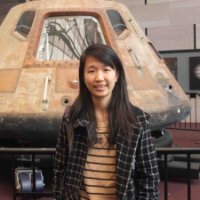
Sep 2017: Wing Chi joining our group as a postdoc welcome!
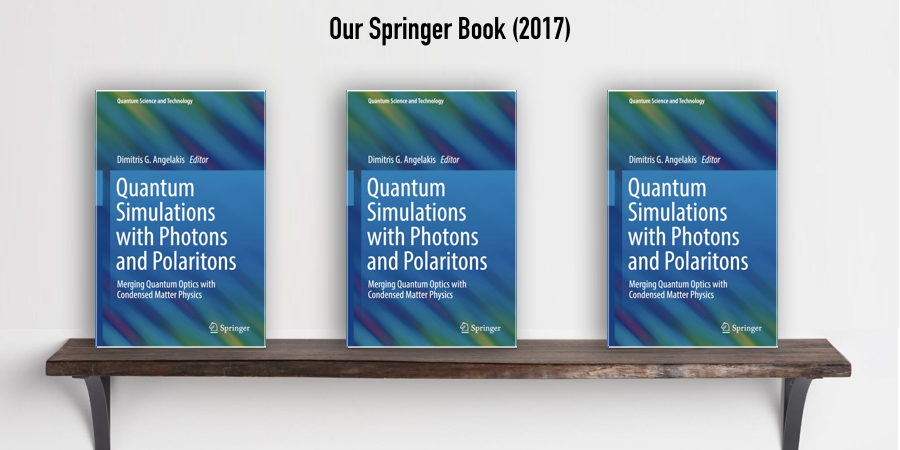
Check our book on “Quantum Simulators with Photons and Polaritons: Merging Quantum Optics with Condensed Matter Physics” by Springer!
This book reviews progress towards quantum simulators based on photonic and hybrid light-matter systems, covering theoretical proposals and recent experimental work. Quantum simulators are specially designed quantum computers. Their main aim is to simulate and understand complex and inaccessible quantum many-body phenomena found or predicted in condensed matter physics, materials science and exotic quantum
See CQT highlight for non specialists.

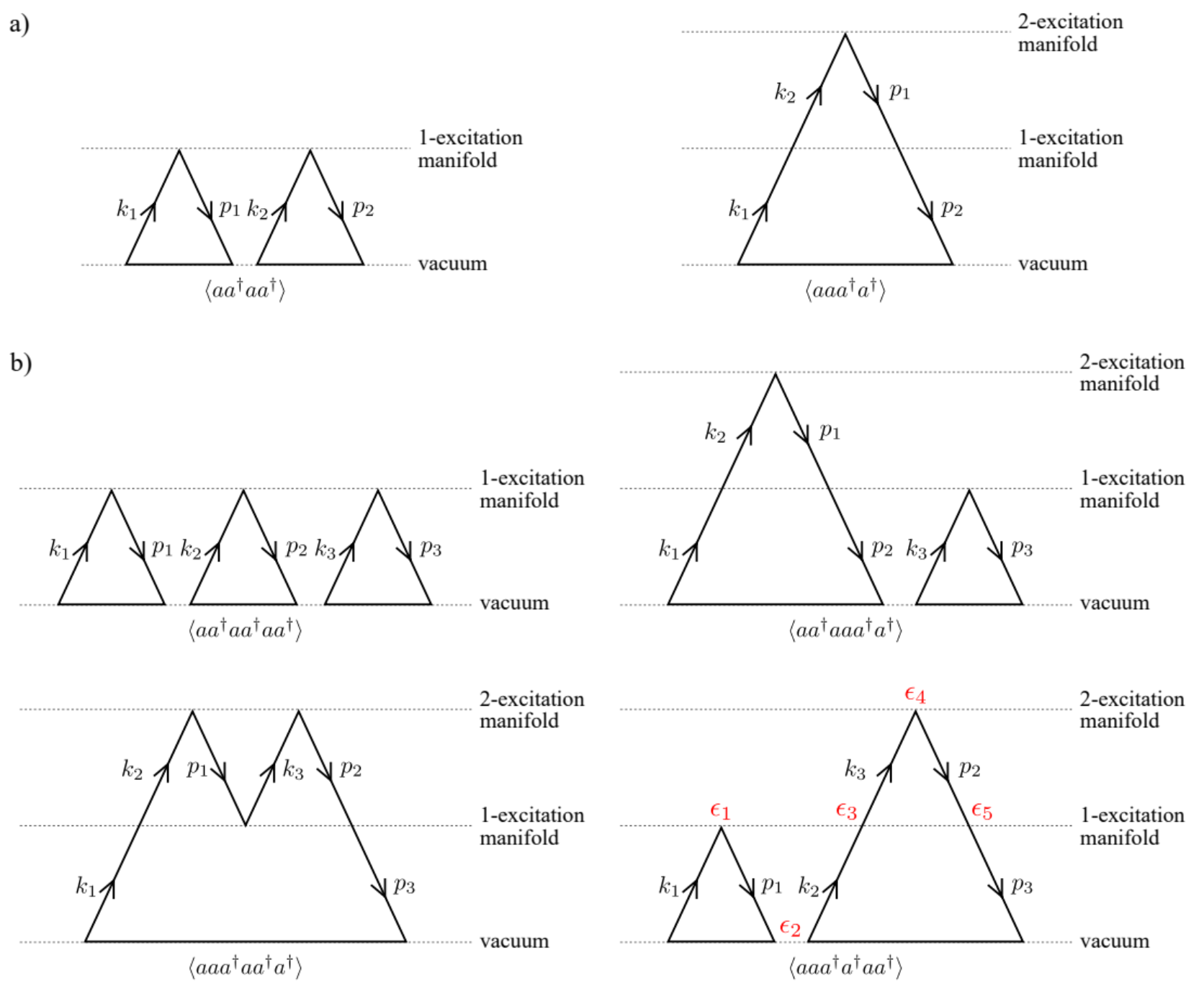
Authors
T.F. See, C. Noh, D.G. Angelakis, “A diagrammatic Diagrammatic Approach to Multiphoton Scattering”, Phys. Rev. A 95, 053845 (2017)
Abstract
We present a method to systematically study multiphoton transmission in one-dimensional systems comprised of correlated quantum emitters coupled to input and output waveguides. Within the Green’s function approach of the scattering matrix (S matrix), we develop a diagrammatic technique to analytically obtain the system’s scattering amplitudes while at the same time visualize all the possible absorption and emission processes. Our method helps to reduce the significant effort in finding the general response of a many-body bosonic system, particularly the nonlinear response embedded in the Green’s functions. We demonstrate our proposal through physically relevant examples involving scattering of multiphoton states from two-level emitters as well as from arrays of correlated Kerr nonlinear resonators in the Bose-Hubbard model.



Dimitris Angelakis (left) and Victor Bastidas (right) with collaborators in Germany found a new way to simplify the equations for a driven quantum system, leading to the discovery that driving can protect a quantum state from decoherence
” Pity poor Schrodinger’s cat. As if it weren’t enough to wish a cat into a state of being simultaneously dead and alive, physicists now have an idea for how to keep it that way – and the answer is to shake it. ….”
Read more from the CQT highlight for non specialists “Shaking Schrodinger’s cat may protect it from the environment”
Authors
Sebastian Restrepo, Javier Cerrillo, V. M. Bastidas, D. G. Angelakis, T. Brandes, “Driven open quantum systems and Floquet stroboscopic dynamics”, Phys. Rev. Lett. 117, 250401 (2016)
Abstract
We provide an analytic solution to the problem of system-bath dynamics under the effect of high- frequency driving that has applications in a large class of settings, such as driven-dissipative many-body systems. Our method relies on discrete symmetries of the system-bath Hamiltonian and provides the time evolution operator of the full system, including bath degrees of freedom, without weak-coupling or Markovian assumptions. An interpretation of the solution in terms of the stroboscopic evolution of a family of observables under the influence of an effective static Hamiltonian is proposed, which constitutes a flexible simulation procedure of nontrivial Hamiltonians. We instantiate the result with the study of the spin-boson model with time-dependent tunneling amplitude. We analyze the class of Hamiltonians that may be stroboscopically accessed for this example and illustrate the dynamics of system and bath degrees of freedom.
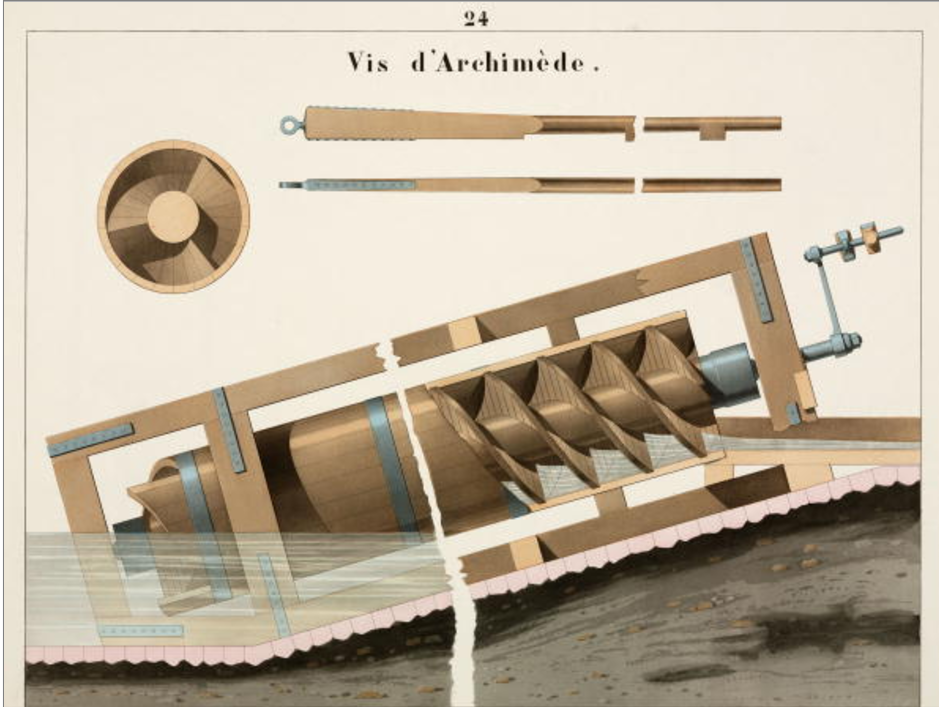
” The inspiration for a new scheme to transport interacting quantum particles has its roots in Ancience Greece. In Thouless pumping, transport happens because of the topology of fields acting on the quantum particles – similar to the way that an Archimedes’ screw pump can move water up a hill,.. ”
Read more from CQT highlight for non specialists ” Topological scheme for transporting quantum particles inspired by Nobel winner’s work “
This work is also highlighted in 7 science news including EurekaAlert!, Phys.org, Health Medicinet, Nanowerk, Nanotechnology Now, Sky Nightly, and Space Daily.
Authors
J. Tangpatinanon, V. M. Bastidas, P. Roushan, S. Assam, D. Jaksch, D. G. Angelakis, “Topological pumping with photons in nonlinear resonator arrays”, Physical Review Letters, 117, 213603 (2016)
Abstract
We show how to implement topological or Thouless pumping of interacting photons in one-dimensional nonlinear resonator arrays by simply modulating the frequency of the resonators periodically in space and time. The interplay between the interactions and the adiabatic modulations enables robust transport of Fock states with few photons per site. We analyze the transport mechanism via an effective analytic model and study its topological properties and its protection to noise. We conclude by a detailed study of an implementation with existing circuit-QED architectures.
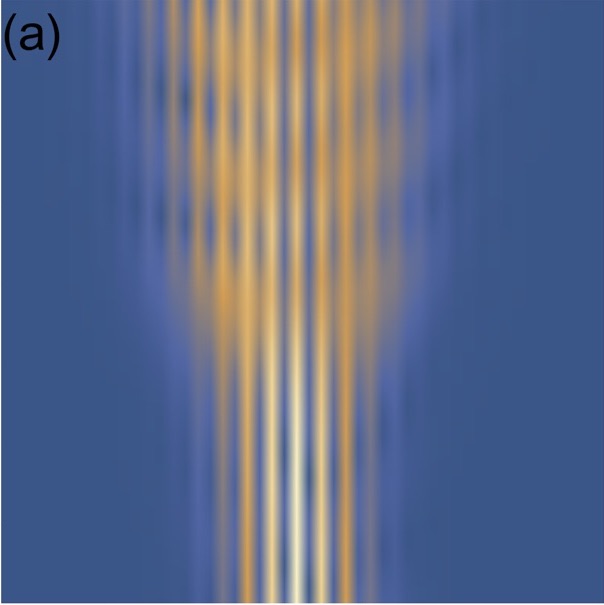
Authors
C. Koke, C. Noh, D. G. Angelakis, “Dirac equation in 2-dimensional curved spacetime, particle creation, and coupled waveguide arrays”, arXiv:1607.04821, Annnals of Physics 374, 162 (2016)
Abstract
When quantum fields are coupled to gravitational fields, spontaneous particle creation may occur similarly to when they are coupled to external electromagnetic fields. A gravitational field can be incorporated as a background spacetime if the back-action of matter on the field can be neglected, resulting in modifications of the Dirac or Klein–Gordon equations for elementary fermions and bosons respectively. The semi-classical description predicts particle creation in many situations, including the expanding-universe scenario, near the event horizon of a black hole (the Hawking effect), and an accelerating observer in flat spacetime (the Unruh effect). In this work, we give a pedagogical introduction to the Dirac equation in a general 2D spacetime and show examples of spinor wave packet dynamics in flat and curved background spacetimes. In particular, we cover the phenomenon of particle creation in a time-dependent metric. Photonic analogs of these effects are then proposed, where classical light propagating in an array of coupled waveguides provides a visualisation of the Dirac spinor propagating in a curved 2D spacetime background. The extent to which such a single-particle description can be said to mimic particle creation is discussed.

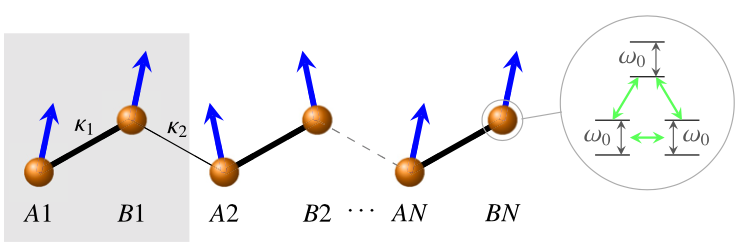
Our joint work with Berlin in “Semiclassical bifurcations and topological phase transitions in a one-dimensional lattice of coupled Lipkin-Meshkov-Glick models” has been published in Phys. Rev. E 94, 032123 (2016)
Authors
V. Sorokin, M. Aparicio Alcalde, V. M. Bastidas, G. Engelhardt, D. G. Angelakis, T. Brandes, “Semiclassical bifurcations and topological phase transitions in a one-dimensional lattice of coupled Lipkin-Meshkov-Glick models”, arXiv: 1604.08023, Phys Rev. E. 94, 0321123 (2016)
Abstract
In this work we study a one-dimensional lattice of Lipkin-Meshkov-Glick models with alternating couplings between nearest-neighbors sites, which resembles the Su-Schrieffer-Heeger model. Typical properties of the underlying models are present in our semiclassical-topological hybrid system, allowing us to investigate an interplay between semiclassical bifurcations at mean-field level and topological phases. Our results show that bifurcations of the energy landscape lead to diverse ordered quantum phases. Furthermore, the study of the quantum fluctuations around the mean-field solution reveals the existence of nontrivial topological phases. These are characterized by the emergence of localized states at the edges of a chain with free open-boundary conditions.


The programme is on! Check out the program, talks (slides and videos) and photos here
Local Organizing Committee
Scientific Advisory Committee


Our comprehensive review on “Quantum Simulations and Many-Body Physics with Light” is out at Reports in Progress in Physics 80, 016401 (2016).
In this review we discuss the works in the area of quantum simulation and many-body physics with light, from the early proposals on equilibrium models to the more recent works in driven dissipative platforms.. We review the major theory results and also briefly outline recent developments in ongoing experimental efforts involving different platforms in circuit QED, photonic crystals and nanophotonic fibers interfaced with cold atoms.
